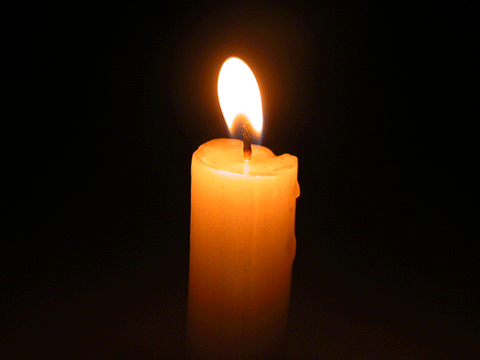Jesus is waiting -
He waits for you with love -
you are never alone
Only in God.com
Catholic Truth Online

Jesus Christ
The Light of our World
always burning for you and me
Wake Up Call to the Laity
Peter Isley, a sex-abuse survivor, has seen the sex-abuse crisis erupt in the Church three times. But this last time is different: The scope of the crisis emerging is global, the responsibility of the bishops for the cover-up of abuse is laid bare, and the laity are now taking the reform of the Church into their own hands.
“I’ve not seen this level of lay people angry,” he said. “They’re just not tolerating this anymore.”
But Isley said now lay Catholics are beginning to wake up to the global scope of the problem and how the bishops and other clergy behind this crisis “destroyed a significant portion of the next generation of Catholic leadership” — young people who had also come from “incredibly Catholic families.”
Not even a year has passed since reports emerged about ex-Cardinal Theodore McCarrick’s alleged history of sexually abusing minors, seminarians and young priests, which were followed by explosive revelations about the extent of episcopal malfeasance in covering up hundreds of cases of sexual abuse in Pennsylvania.
Those revelations fueled more victims to come forward and showed a global crisis where the victims of abusive clergy and enabling bishops included both children, laymen and women, seminarians and religious sisters — and the cover-up included horrific crimes such as aborting unborn children.
Though decades late for survivors, the sleeping giant of the lay faithful is finally stirring in response to these enormous crimes. New coalitions are forming to create alliances between the laity and those clergy and bishops committed to reforming the Church and delivering it from the evil that has scourged so many victims and bled it of countless disillusioned faithful.
As Pope Francis dampened expectations around the Vatican’s summit of presidents of bishops’ conferences, lay faithful groups began educating and mobilising each other to reform the Church’s governance within the parameters of the Church’s doctrine.
Lay-Driven Reform and Initiatives
“We are an entirely lay-driven apostolate of Mass going Catholics,” Jonathan Carp, the executive director of the St. Peter Damian Society, said. “We’re really a cross section of faithful Catholics from across the country.”
Carp said celibate clergy who engage in extramarital sex of any kind need to be removed from priestly ministry and office for the good of the Church.
“Corruption breeds corruption,” he said. “When you tolerate any sort of corruption, you can’t police any of it.”
The laity are also mobilising at the diocesan level. One group, the Daniel Coalition, formed in 2018 to “help bear the burdens of victims and put an end to sexual abuse and misconduct by Catholic clergy in the Diocese of Lansing.” The group, which is named for the prophet Daniel coming to the defence of Susanna, a victim of attempted rape by sexually predatory religious leaders, says it represents victims, documents their stories, refers for counselling, and advocates for justice through secular and canon law.
The culture of clericalism, they said, explains the cover-ups by the bishops and their chanceries, but it does not explain the phenomenon that led priests to engage in sexual abuse in the first place. The Catholic Women’s Forum director maintained the abuse of minors “cannot be cordoned off, as if it’s completely separate” from the sexual abuse of lay adults, seminarians, nuns and “the general climate of sexual misconduct.”
The Church needs a thorough study on clerical celibacy and the conditions that need to be addressed so clerics can live out their vocations healthily and prevent harm done to their victims’ bodies and souls and to the Church at large. Hasson said it was clear that a certain number among the hierarchy seem to think that violating celibacy is not “that big a deal.”
(taken from an article by Peter Jesserer Smith.)
National Catholic Register.

One such new initiative is the Society of St. Peter Damian, a penitential society that started to form in August after Catholics on social media decided the Church needed the laity to provide a “Catholic response” to these crimes and found a champion in St. Peter Damian, the doctor of the Church who exhorted the laity to work with reform-minded bishops and clergy to fight the scourge of clerical immorality that had poisoned the papacy and nearly overwhelmed the Church in the 11th century.
St Peter Damian
The Church of Damian’s time had been rocked by almost two centuries of political and social chaos, and the doctrinal ignorance, scandalous personal behavior, and petty venality of the clergy had reached intolerable levels. Bishops and priests were involved in every kind of immorality, publicly living with concubines or illicit wives, or furtively engaging in homosexual practices. Many had purchased their ordinations and the lucrative benefices that accompanied them, and spent their free time in scandalous secular amusements. An outraged laity was beginning to rise up against ecclesiastical authority, sometimes in riotous outbursts of violence that threatened the civil order.”
“In a rebuke against the 11th century equivalent of covering up scandals of sexual misbehavior, Damian blames lax ecclesiastical superiors for their “silence” with regard to clerical sodomy, and regards them as sharing in the guilt of those under their authority. “Undoubtedly, those who turn a blind eye to the sins of their subjects that they are obligated to correct, also grant to their subjects a license to sin through their ill-considered silence,” writes Damian
